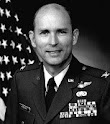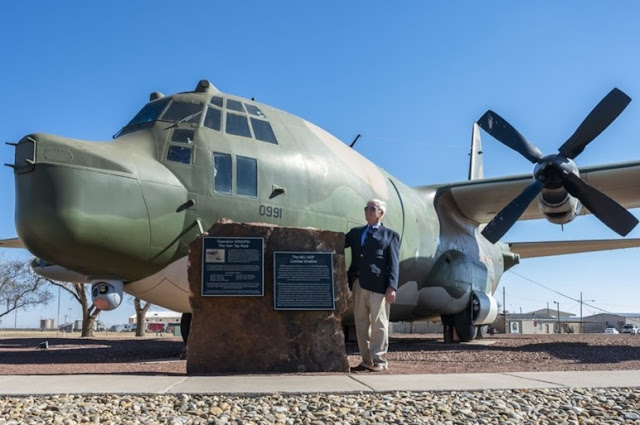The 39th Air Rescue Squadron, established on October 17, 1952, and activated on November 14, 1952, at Ashiya AB, Japan, was formerly D Flt of the 3d Air Rescue Squadron. This transformation occurred when the Air Rescue Service upgraded all previous Air Rescue Squadron Flights to full Squadron status. Initially assigned to the 3d Air Rescue Group, it operated SA-16, SC-47, and SH-19 aircraft that were previously handled by D Flight. The squadron carried out search, rescue, and escort missions in Japan and Korea during and after the Korean War.
On June 18, 1957, it was reassigned to the 2d Air Rescue Group and subsequently inactivated on November 24.
Vietnam War
On January 16, 1967, the squadron was activated and redesignated as the 39th Aerospace Rescue and Recovery Squadron. It was organized two days later at Udorn RTAFB, assigned to the 3d ARRG, and received six HC-130H Hercules aircraft transferred from the 37th ARRS. On June 8, 1967, the squadron moved from Udorn to Tuy Hoa AB, South Vietnam, where it began receiving HC-130Ps to replace the HC-130Hs.
The introduction of the HC-130P marked a significant advancement, as it was the first aircraft capable of refuelling helicopters, greatly extending the range for those involved in combat search and rescue missions. By mid-1969, the squadron operated 11 HC-130Ps from Tuy Hoa. On September 16, 1970, the squadron relocated again, this time from Tuy Hoa AB to Cam Ranh AB.
A couple of patches dating from when the Squadron was based at Tuy Hoa in South Vietnam.
Operation Kingpin
The squadron played a crucial role in supporting the Son Tay raid aimed at rescuing U.S. prisoners of war held just 23 miles from Hanoi. The mission, led by MC-130E's from the 7th SOS (call signs Cherry 01/02) and five HH-53's from the 40th ARRS (call signs Apple 01-05), along with one HH-3E (call sign Banana 01), saw MC-130P's from the 39th ARRS refuelling the helicopters.
The operation was further bolstered by five A-1's (call signs Peach 01-05), ten F-4's (call signs Falcon 01-05/11-15), and five F-105's (call signs Firebird 01-05). Notably, five crew members were honoured with the Distinguished Flying Cross, and two received the Silver Star, the USAF's third-highest decoration.
Lime 01 HC-130P #65-0991 | Lime 02 HC-130P #66-0212 |
Aircraft Commander Maj. William J. Kornitzer | Aircraft Commander |
Pilot | Pilot John H Pletcher Jr. |
Co-Pilot | |
Navigator | Navigator |
Flight Mechanic MSgt. Johnie Boman | Flight Mechanic |
Flight Mechanic MSgt. Holly V. Keel | Flight Mechanic MSgt Lawrence Durbin |
Radio Operator SSgt Aaron Swinson | Radio Operator TSgt. Richard D. Klasser |
Load Master SSgt Samuel L. Waters | Load Master SSgt. Luther F. Hollums |
Col. (ret.) Clyde “Neal” Westbrook stands in front of Lime 01 the actual HC-130P Combat King which is now on static display at Cannon AFB. Westbrook piloted the aircraft during the Son Tay Raid in the Vietnam War, an joint special operations mission designed to recover American POWs. (U.S. Air Force photo by Senior Airman Maxwell Daigle)
Lime 02 is now on static display at the Castle AFB Museum, preserved for future generations.
These patches were made by the crew commemorating the raid. KITD/FOHS is an acronym for Kept in the dark/Fed on horse S#!t. three superb pictures of patches courtesy of John Fushi.
Inactivation
In March 1972, the squadron relocated from Cam Ranh to Korat RTAFB. On April 1, 1972, the 39th was disbanded, and its aircraft and crews temporarily joined Detachment 4 of the 3d Aerospace Rescue and Recovery Group at Korat. The squadron was officially deactivated on April 30, 1972. Subsequently, on July 8, 1972, the detachment was succeeded by the 56th Aerospace Rescue and Recovery Squadron.
On October 10, 1990, the squadron underwent a redesignation, becoming the 39th Air Rescue Squadron under the Air Rescue Service. It was activated at Misawa AB, Japan, on January 1, 1992, operating the HH-60G Pave Hawk. Subsequently, on February 1, 1993, the squadron was again redesignated as the 39th Rescue Squadron and reassigned to the 432d Operations Group within the 432d Fighter Wing at Misawa.
The 39th Rescue Squadron was inactivated on August 1, 1994, coinciding with the inactivation of the 432nd FW. However, it was reactivated in 1997 as an Air Force Reserve Command unit and was assigned to the 920th Rescue Group, later becoming the 920th Rescue Wing, at Patrick Space Force Base, Florida. The squadron assumed control of all Lockheed HC-130P/N aircraft and command responsibilities for HC-130 flight crews and associated support personnel, previously assigned to the 301st Rescue Squadron.
Since its reactivation, the squadron has played a crucial role in various operations, providing rescue support to NASA during the Space Shuttle program on the Eastern Range, participating in humanitarian efforts after Hurricane Katrina, and making multiple combat deployments to Iraq and Djibouti following the attacks on September 11, 2001, in support of Operations Iraqi Freedom and Enduring Freedom.
On December 16, 2019, the 39th retired its final HC-130 P/N Combat King aircraft. This aging fleet was set to be succeeded by the newer HC/MC-130J models in the Spring of 2020. Notably, the squadron welcomed its initial HC-130J Combat King II on April 2, 2020, marking the transition to more modern aircraft.
If you have any additional information about this patch or anything to add, for example, photos or stories, please contact me at
usafjollygreen@gmail.com
I will get back to you.
Thanks👣














.jpeg)
.jpeg)
.jpeg)
No comments:
Post a Comment